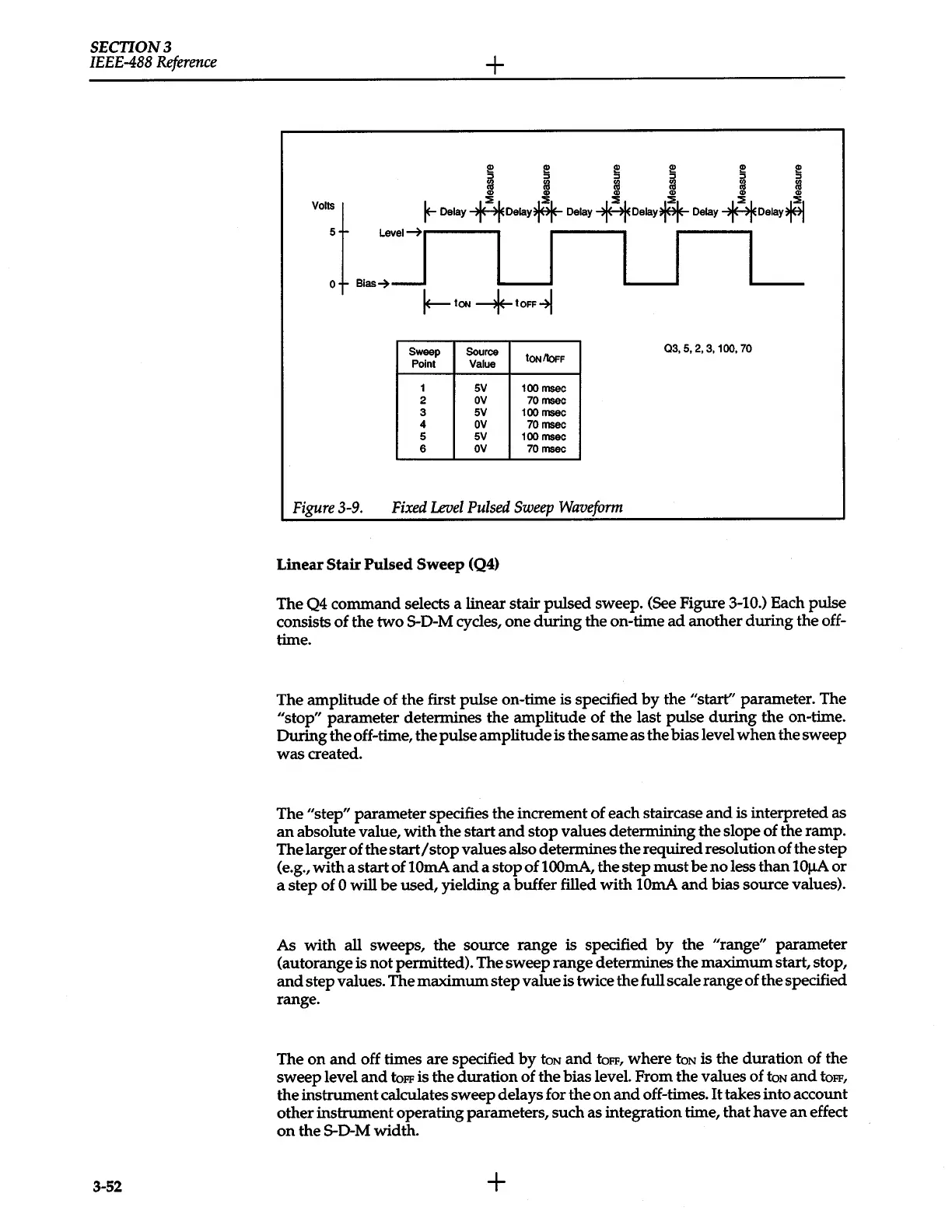SECTION3
IEEE-488
Reference
3-52
+
e e e e e e
~ ~ ~ ~ ~
m
Volts
t
jE-
Delay
flDelay~
Delay
flDelay~
Delay
flDelay~
:
_:J
I I I I
___
I
~too-+
toFF1
Sweep
Source
toolloFF
Point
Value
03,
5, 2, 3,
100,
70
1
5V
100
msec
2
ov
70msec
3
5V
100
msec
4
ov
70msec
5
5V
100
msec
6
OV
70msec
Figure3-9.
Fixed
Level
Pulsed
Sweep
Waveform
Linear
Stair
Pulsed
Sweep
(Q4)
The Q4 command selects a linear stair
pulsed
sweep. (See Figure
3-10.)
Each pulse
consists of the
two
5-D-M cycles, one
during
the on-time
ad
another
during
the off-
time.
The amplitude of the first pulse on-time
is
specified
by
the "start"
parameter. The
"stop"
parameter determines the amplitude
of
the last pulse
during
the on-time.
During the off-time, the pulse amplitude
is
the same as the bias level
when
the sweep
was
created.
The "step" parameter specifies the increment of each staircase
and
is
interpreted as
an
absolute value,
with
the start
and
stop values determining
the
slope of the ramp.
The larger of the
start/
stop values also determines the required resolution of the step
(e.g.,
with
a start of
lOrnA
and
a stop
of
lOOmA,
the step
must
be
no
less
than
lOJ.IA
or
a step of
0
will
be
used, yielding a buffer filled
with
lOrnA
and
bias source values).
As
with
all sweeps, the source range
is
specified
by
the
"range"
parameter
(autorange
is
not
permitted). The sweep range determines the
maximum
start, stop,
and
step values. The maximum step value
is
twice the
full
scale range of the specified
range.
The
on
and
off times are specified
by
toN
and
toFF,
where
toN
is the duration of the
sweep level
and
toFF
is the duration of the bias level. From the values of
toN
and
toFF,
the instrument calculates sweep delays for the
on
and
off-times.
It
takes into account
other instrument operating parameters, such
as
integration time,
that
have
an
effect
on
the
5-D-M
width.
+

